Plant Based Diet Starter Grocery List
This post contains affiliate links for which I may earn a commission (at no extra cost to you) should you make a purchase. As an Amazon Associate I earn from qualifying purchases. Please see my disclaimer for more information.
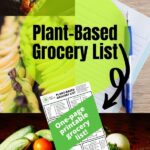
Have you decided to start a plant-based diet, but are unsure of what to eat?
If eliminating animal products is new for you, you are likely going to be completely changing your grocery shopping routine! Read on for a categorized plant-based grocery list of healthy, whole-food items you can get at the store.
Of course you don't need to buy all of these items at once! They are simply ideas, and you should pick and choose which items to buy each week, based on the meals you plan on making.
- What is a plant-based diet?
- Plant-Based Grocery List
- Whole Grains
- Beans and Other Legumes
- Vegetables (fresh and frozen)
- Cruciferous
- Other non-starchy vegetables
- Starchy vegetables
- Fruits (fresh and frozen)
- Nuts and Seeds
- Herbs and Spices
- Baking Ingredients
- Other Foods/Ingredients
- What should you drink?
- Plant-Based Meal Plan
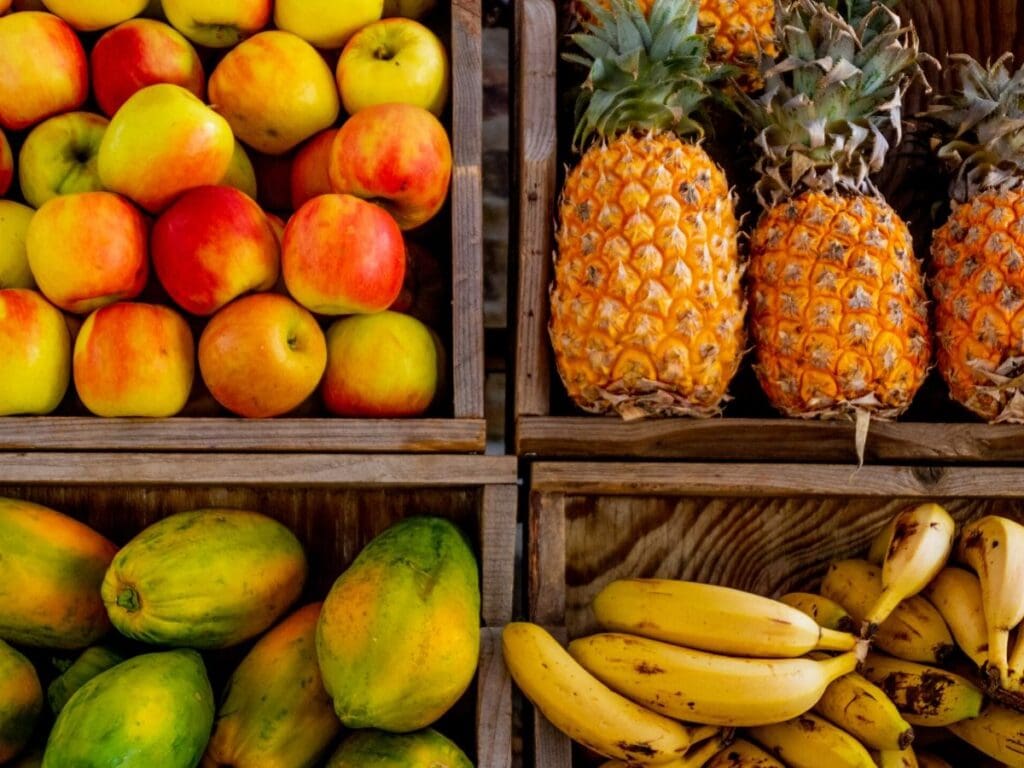
What is a plant-based diet?
Before we take a look at the list, let's briefly go over what a plant-based diet is…
A plant-based diet is very simply a diet that consists of food that comes from plants! Some people eat a mostly plant-based diet and continue to eat some animal products occasionally. However, a completely 100% plant-based diet eliminates all animal products.
This means no meat of any kind, no dairy, and no eggs. For many people transitioning to a plant-based diet, this seems nearly impossible! But once you get the hang of it, it's really not that difficult.
So, a plant-based diet eliminates animal products, but that alone doesn't necessarily make it healthy. You can still eat plenty of packaged chips, cookies, and processed vegan meat replacements on a plant-based diet if you so choose.
In order to get the full health benefits of eliminating animal products, I suggest focusing on a whole-foods plant-based diet (WFPB). This focuses on foods that are unprocessed, or very minimally processed. What does processed mean? Well known plant-based doctor, Michael Greger simply explains it as, "nothing bad added, nothing good taken away."
This means that a whole food can be minimally processed, but still healthy enough for a whole-foods plant-based diet if the processing does not remove anything beneficial or add anything bad. For example, oat flour is just oats that are ground up (processed) until a flour forms. It is still only made of oats though, so this is a great flour to use for baking on a WFPB diet.
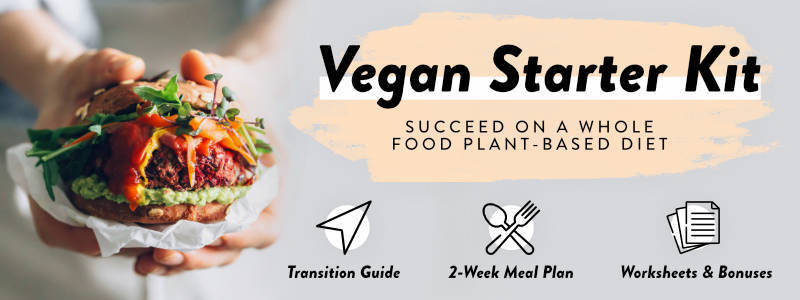
The items on this plant-based grocery list focus on what you need for a WFPB diet. If you make the personal decision to include some processed foods or animal foods from time to time, go ahead and add those items to your list as well.
Plant-Based Grocery List
If you want a printable, one-page version of this plant-based grocery list, enter you email below.
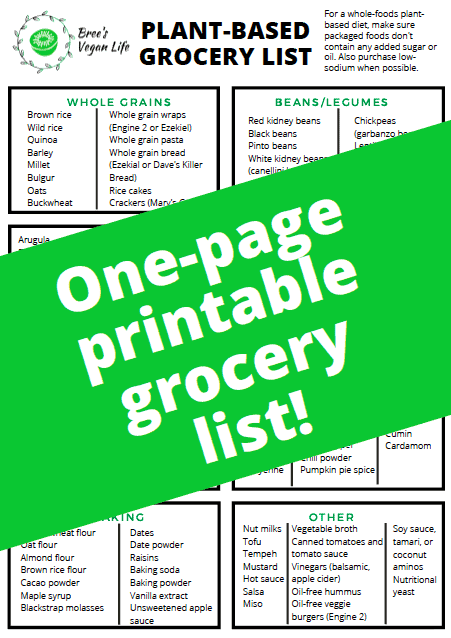
By giving your email, you are also subscribing to Bree's Vegan Life, but you may unsubscribe at any time! Make sure you check your inbox to confirm your email address after submitting below. Once confirmed, you will receive the plant-based grocery list!
NOTE: If you are gluten-free or have any other allergies, sensitivities, or food preferences, you must always check labels and ingredient lists on store-bought foods. The only dietary restriction in this list is that everything is plant-based, so always do your own research before purchasing something if you have other dietary restrictions. For example, many whole grains such as oats can be cross-contaminated with gluten, unless labelled as certified gluten-free.
Whole Grains
- Brown rice
- Wild rice
- Quinoa
- Barley
- Millet
- Bulgur
- Oats (any kind, with no additives)
- Buckwheat
- Whole-grain tortillas (oil-free whole wheat or corn, these can be used to make tortilla chips)
- Whole-grain wraps (Engine 2 or Ezekiel are good brands with oil-free choices)
- Whole-grain pasta (made with 100% whole wheat, brown rice, quinoa, etc.)
- Whole-grain bread ( Ezeki e l or Dave's Killer Bread are good choices, check ingredients to ensure no oil)
- Rice cakes
- Crackers ( Mary's Gone are oil-free)
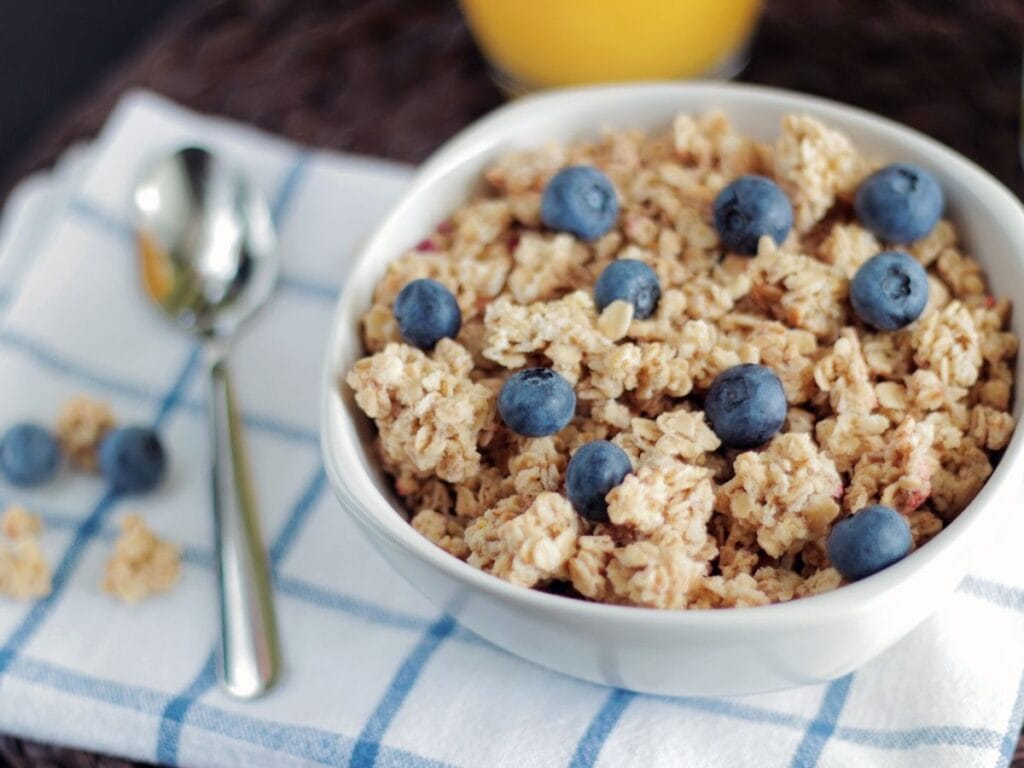
Whole grains will make up a large part of your diet if you are eating whole-foods plant-based. Ideally, your meals will be half vegetables, one quarter beans and one quarter grains. You should strive for at least 3 servings of whole grains per day, according to Dr. Greger, author of How Not To Die .
For a WFPB diet, make sure you check the ingredients on grain products to ensure no added oil, sugar, or anything else processed.
Some of my favourite ways to eat grains are as oatmeal for breakfast with some fruit and peanut butter, and as grain bowls. Grain bowls are super easy to make. Just cook up your grain of choice (I like brown rice or quinoa), add some leafy greens and any other vegetables of choice, add some beans, and top it all with salsa or a yummy oil-free dressing!
Beans and Other Legumes
- Red kidney beans
- Black beans
- Pinto beans
- White kidney beans (canellini beans)
- Chickpeas (garbanzo beans)
- Lentils (any kind)
- Peas
- Navy beans
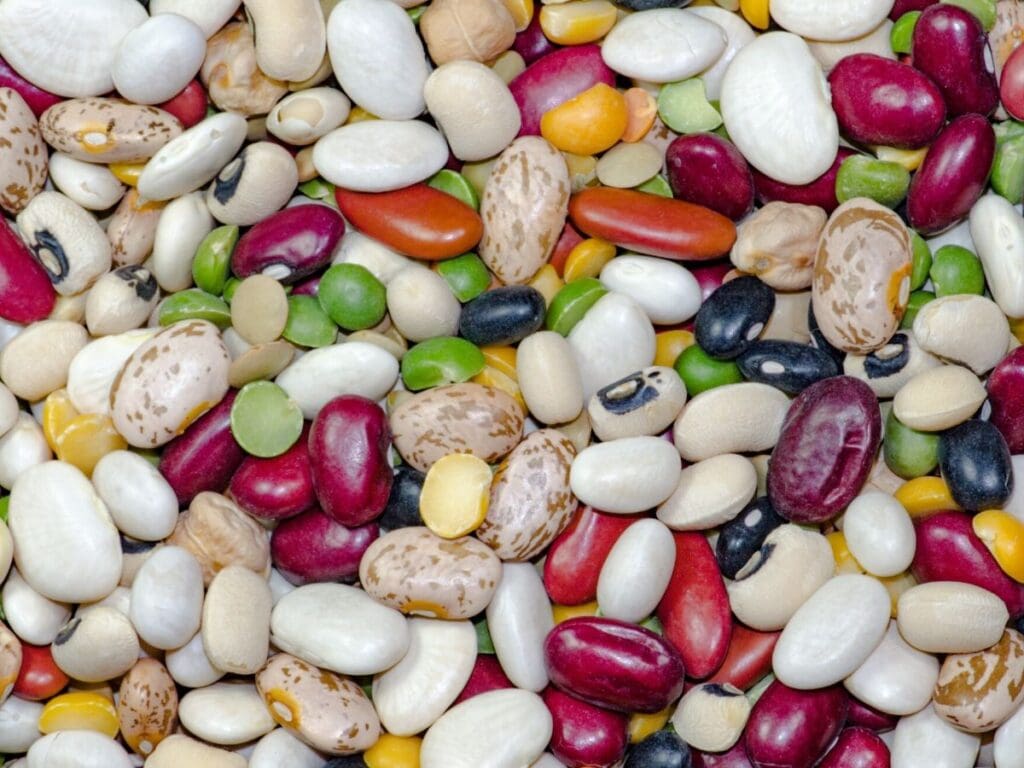
Beans are a great source of plant-based protein. They are the main protein source for many people who eat a strict, 100% plant-based diet. They are also high in iron, zinc, and fiber. Add beans to your grain bowls or make some oil-free hummus to get at least 3 servings of beans into your daily diet.
You can buy dried or canned beans. If buying canned, make sure there is no added salt. Canned beans are more expensive, but they are great to have for when you want to quickly add beans to a meal.
Vegetables (fresh and frozen)
Cruciferous
- Arugula
- Broccoli
- Cauliflower
- Kale
- Collard greens
- Brussels sprouts
- Cabbage
- Mustard Greens
Other non-starchy vegetables
- Spinach
- Romaine
- Green beans
- Zucchini
- Carrots
- Asparagus
- Celery
- Cucumber
- Peppers
- Mushrooms
- Onion
- Garlic
- Tomatoes (a fruit, but fits better in the vegetable category)
Starchy vegetables
- Potatoes
- Yams
- Squash
- Corn
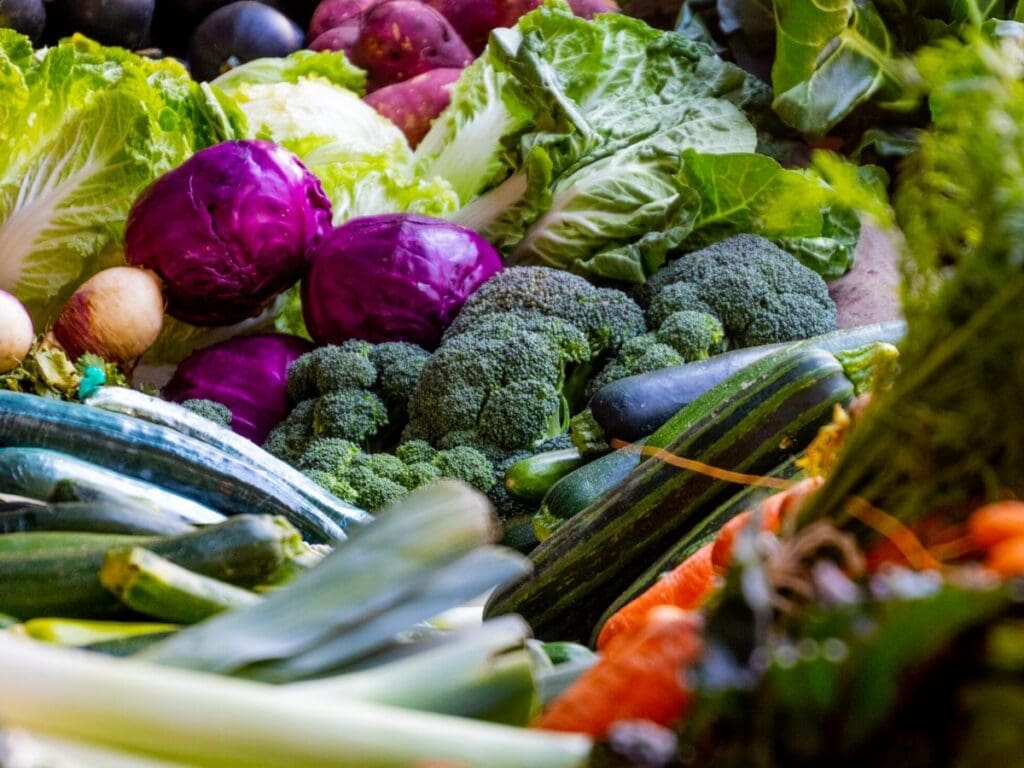
Vegetables should make up a very large part of any healthy diet. You should try to get at least 5 servings of vegetables per day, and it's best to include leafy greens and cruciferous vegetables.
Cruciferous vegetables are especially nutritious due to their sulforaphane content. Dark leafy greens are high in antioxidants, and you should try having at least two cups per day.
It's super easy to add some spinach to a fruit smoothie. If you add enough fruit, you won't even taste the spinach at all! This spinach apple smoothie is one of my favourites!
It's also easy to add some leafy greens to a grain bowl. If you have a tasty dressing, you will love eating your greens! Give this tahini and mustard dressing a try!
If possible, buy organic produce because organic farming practices avoid pesticides and antibiotics. Organic produce also has a higher percentage of antioxidants, but don't stress if it's too expensive for you. Non-organic produce is always better than none at all!
Fruits (fresh and frozen)
- Apples
- Oranges
- Pears
- Bananas
- Rapberries
- Blueberries
- Cherries
- Strawberries
- Kiwis
- Mango
- Pineapple
- Watermelon
- Apricots
- Avocado
- Grapes
- Peaches
- Lemons
- Limes
- Grapefruit
- Honeydew
- Kumquats
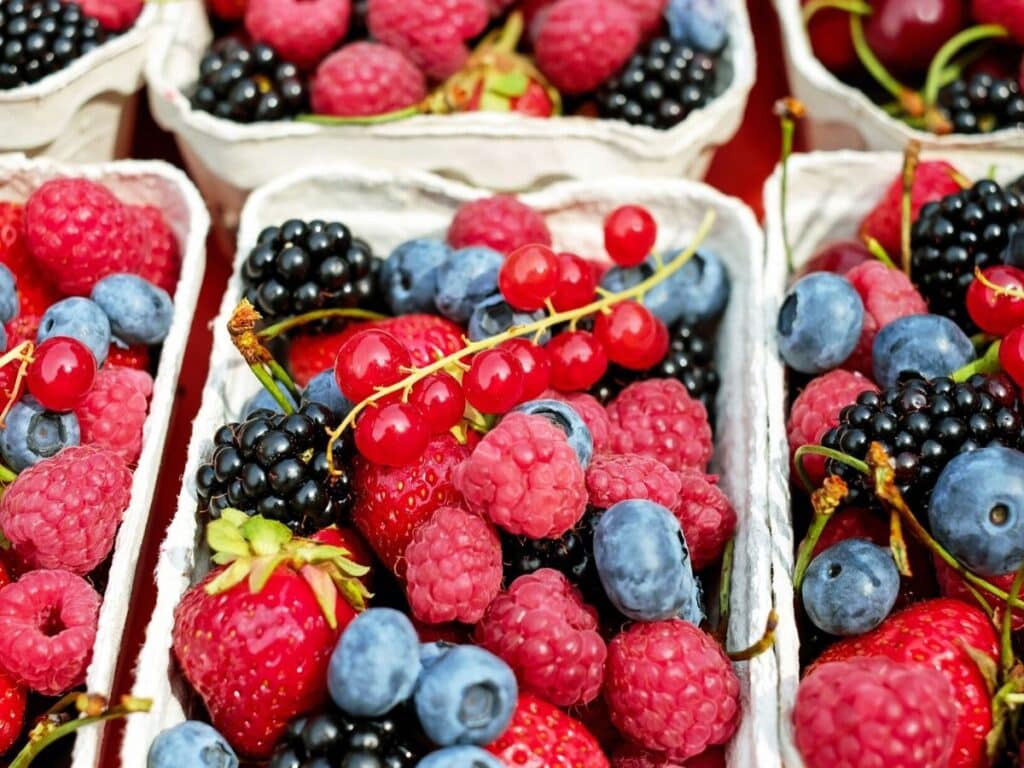
You should incorporate fruit into your diet everyday. 3-4 servings per day is a good goal, and you should try to make at least one of these servings berries. Berries are particularly high in antioxidants, but all fruit is beneficial for your health!
Limit juice because it removes fiber and other nutrients. If you like dried fruit, try to find some with no added sugar, or you can make your own with a dehydrator.
An easy way to incorporate fruit into your diet is to add some to your oatmeal, or just chop it up and eat it as a snack. Having apples with peanut butter is also delicious!
It's always nice to have some frozen fruit at home as well so that you can make some delicious fruit smoothies!
Nuts and Seeds
- Peanuts
- Almonds
- Walnuts
- Cashews
- Brazil nuts
- Pistachios
- Sunflower seeds
- Flaxseeds
- Chia seeds
- Hemp seeds
- Pumpkin seeds
- Sesame seeds
- Nut butters (all-natural, with no added oil or sugar)
Nuts are so versatile and can really come in handy when making sauces and dips for a plant-based diet. Cashews are especially great for making creamy dressings, such as this oil-free Caesar salad dressing .
When purchasing nuts and seeds, it is best to ensure that there is no added sugar, salt, or oil. The same goes for nut butters.
Some simple ways to get a serving of nuts into your diet is adding some peanut butter to oatmeal or having a nut-based dressing on a salad or grain bowl.
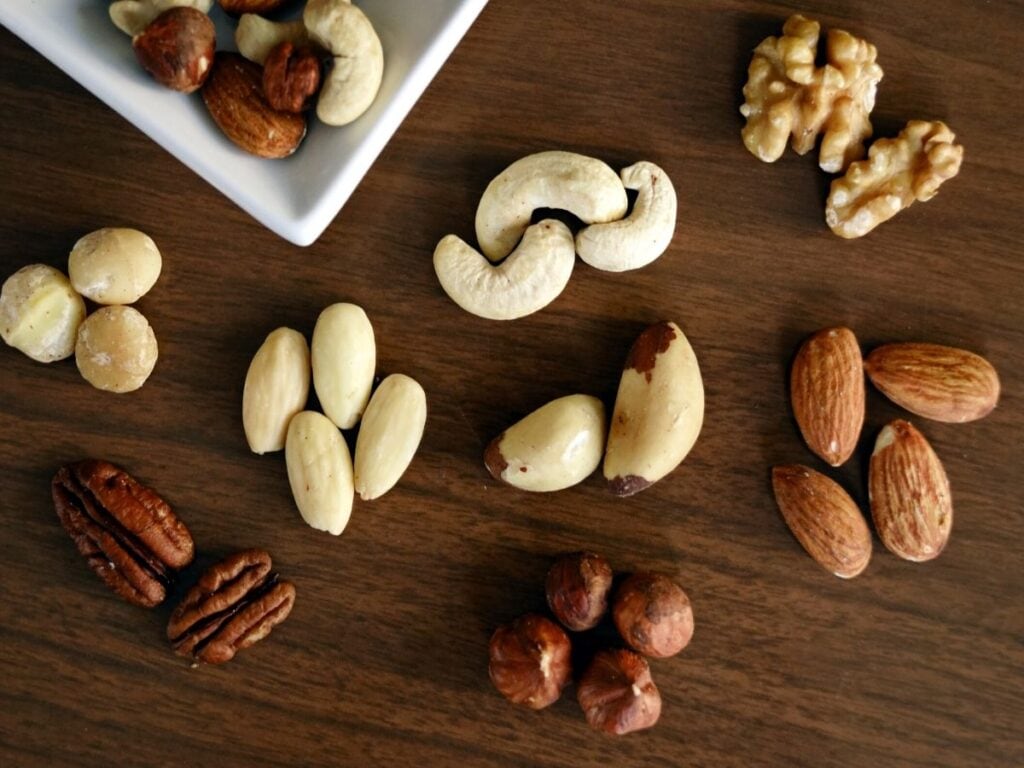
Herbs and Spices
- Basil
- Sage
- Thyme
- Oregano
- Dill
- Paprika
- Cayenne
- Curry powder
- Onion powder
- Garlic powder
- Italian seasoning
- Black pepper
- Chili powder
- Pumpkin pie spice
- Nutmeg
- Cinnamon
- Turmeric
- Cumin
- Cardamom
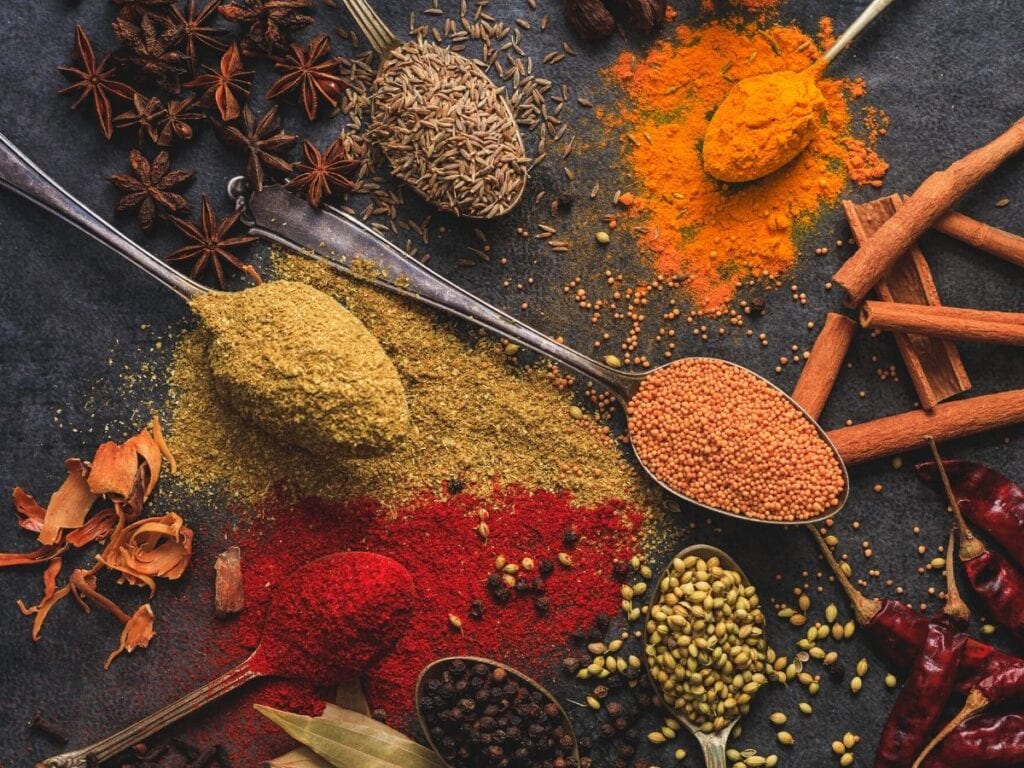
So many people seem to think that plant-based food is bland and boring. Maybe they aren't using enough herbs and spices! Herbs and spices add amazing flavours to any dish, and they are also full of nutrition.
Add cinnamon to your oatmeal, sprinkle some chili powder on a burrito bowl , add some turmeric to your tofu scramble, the options are endless!
Baking Ingredients
Baking on a plant-based diet will require some different ingredients that you may not be used to using for baked goods. Here are some items that I regularly have in my kitchen for baking:
- Flour (whole wheat, oat, almond, coconut, amaranth, barley, brown rice, quinoa, etc.)
- Cacao powder
- Pure maple syrup or blackstrap molasses
- Dates
- Date powder
- Raisins
- Baking soda
- Baking powder
- Vanilla extract
- Unsweetened applesauce
Other Foods/Ingredients
Here is a list of items that don't necessarily fit into any of the categories above. Many of these items are great for cooking.
- Nut milks (unsweetened)
- Tofu
- Tempeh
- Mustard
- Hot sauce
- Salsa
- Miso
- Vegetable broth (low-sodium, no added oil)
- Canned tomatoes and tomato sauce (no added salt or oil)
- Vinegars (balsamic, apple cider)
- Hummus (oil-free, make your own if you can't find any!)
- Veggie burgers (Engine 2 brand has oil-free burgers, or make your own)
- Soy sauce, tamari, or coconut aminos (low-sodium)
- Nutritional yeast
What should you drink?
On a healthy plant-based diet, you should focus on drinking plenty of water, and not much else. You can also incorporate some teas and pure fruit juices, but keep in mind that fiber and other nutrients are lost from fruit when it is juiced, so whole fruits are better than juice!
Plant-Based Meal Plan
Now that you have a plant-based grocery list to help you with your shopping, you may be wondering how to create delicious plant-based meals.
There are plenty of plant-based recipes that you can use from this site for free, however some people find it easier to have a detailed meal plan laid out for them.
If you are looking for a complete guide to starting a whole-foods plant-based diet, I highly recommend checking out this Vegan Starter Kit from Nutriciously.
Upon purchasing this e-book, you will get instant online access to over 200 pages of information about a plant-based diet.
This includes more than 40 recipes and a 14-day meal plan that comes with shopping lists. It's the perfect way to get started!
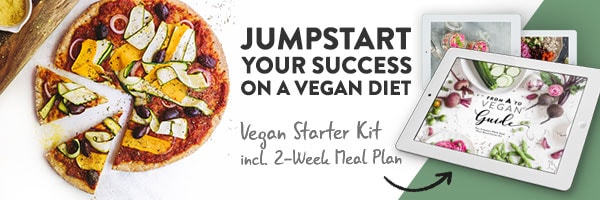
Read more about the Vegan Starter Kit here .
If you're interested in reading more about the benefits of a plant-based diet, check out this list of the 7 best plant-based nutrition books !
Good luck on your plant-based journey! Feel free to leave any questions or comments below!
Plant Based Diet Starter Grocery List
Source: https://www.breesveganlife.com/plant-based-grocery-list-beginners/